Biology GK Compilation From NEET Exam 2020:
1. Name the enzyme that facilitates the opening of DNA helix during transcription
(A) DNA helicase
(B) DNA polymerase
(C) RNA polymerase
(D) DNA ligase
Ans: RNA polymerase (C)
2. Which one of the following is the most abundant protein in the animals?
(A) Collagen
(B) Lectin
(C) Insulin
(D) Haemoglobin
Ans: Collagen (A)
3. The body of the ovule is fused within the funicle at
(A) Micropyle
(B) Nucellus
(C) Chalaza
(D) Hilum
Ans: Hilum (D)
4. Which of the following is correct about viroids?
(A) They have free RNA without a protein coat
(B) They have DNA with a protein coat
(C) They have free DNA without a protein coat
(D) They have RNA with a protein coat
Ans: They have free RNA without a protein coat (A)
5. The number of substrate-level phosphorylations in one turn of the citric acid cycle is
(A) One
(B) Two
(C) Three
(D) Zero
Ans: One (A)
6. The product(s) of a reaction catalyzed by nitrogenase in root nodules of leguminous plants is/are
(A) Nitrate alone
(B) Ammonia and oxygen
(C) Ammonia and hydrogen
(D) Ammonia alone
Ans: Ammonia and hydrogen (C)
7. Which of the following statements is correct?
(A) Adenine pairs with thymine through one H-bond
(B) Adenine pairs with thymine through three H-bonds
(C) Adenine does not pair with thymine
(D) Adenine pairs with thymine through two H-bonds
Ans: Adenine pairs with thymine through two H-bonds (D)
8. Select the option including all sexually transmitted diseases
(A) Gonorrhoea, Malaria, Genital herpes
(B) AIDS, Malaria, Filaria
(C) Cancer, AIDS, Syphilis
(D) Gonorrhoea, Syphilis, Genital herpes
Ans: Gonorrhoea, Syphilis, Genital herpes (D)
9. Embryological support for evolution was disapproved by
(A) Alfred Wallace
(B) Charles Darwin
(C) Oparin
(D) Karl Ernst von Baer
Ans: Karl Ernst von Baer (D)
10. The roots that originate from the base of the stem are
(A) Primary roots
(B) Prop roots
(C) Lateral roots
(D) Fibrous roots
Ans: Fibrous roots (D)
11. In gel electrophoresis, separated DNA fragments can be visualized with the help of
(A) Ethidium bromide in UV radiation
(B) Acetocarmine in UV radiation
(C) Ethidium bromide in infrared radiation
(D) Acetocarmine in bright blue light
Ans: Ethidium bromide in UV radiation (A)
12. Bilaterally symmetrical and acoelomate animals are exemplified by
(A) Platyhelminthes
(B) Aschelminthes
(C) Annelida
(D) Ctenophora
Ans: Platyhelminthes (A)
13. Which is the important site of the formation of glycoproteins and glycolipids in eukaryotic cells?
(A) Peroxisomes
(B) Golgi bodies
(C) Polysomes
(D) Endoplasmic reticulum
Ans: Golgi bodies (B)
14. The QRS complex in a standard ECG represents
(A) Depolarisation of auricles
(B) Depolarisation of ventricles
(C) Repolarisation of ventricles
(D) Repolarisation of auricles
Ans: Depolarisation of ventricles (B)
15. Experimental verification of the chromosomal theory of inheritance was done by
(A) Sutton
(B) Boveri
(C) Morgan
(D) Mendel
Ans: Morgan (C)
16. Identify the incorrect statement.
(A) Sapwood is involved in the conduction of water and minerals from the root to the leaf
(B) Sapwood is the innermost secondary xylem and is lighter in color
(C) Due to the deposition of tannins, resins, oils, etc., the heartwood is dark in color
(D) Heartwood does not conduct water but gives mechanical support
Ans: Sapwood is the innermost secondary xylem and is lighter in color (B)
17. Identify the substances having a glycosidic bond and peptide bond, respectively in their structure
(A) Glycerol, trypsin
(B) Cellulose, lecithin
(C) Inulin, insulin
(D) Chitin, cholesterol
Ans: Inulin, insulin (C)
18. By which method was a new breed ‘Hisardale’ of sheep formed by using Bikaneri ewes and Marino rams?
(A) Mutational breeding
(B) Crossbreeding
(C) Inbreeding
(D) Outcrossing
Ans: Crossbreeding (B)
19. If the head of the cockroach is removed, it may live for a few days because
(A) the cockroach does not have a nervous system
(B) the head holds a small proportion of the nervous system while the rest is situated along the ventral part of its body
(C) the head holds a 1/3rd of a nervous system while the rest is situated along the dorsal part of its body
(D) the supra-oesophageal ganglia of the cockroach are situated in ventral part of the abdomen
Ans: the head holds a small proportion of the nervous system while the rest is situated along the ventral part of its body (B)
20. How many true-breeding pea plant varieties did Mendel select as pairs, which were similar except in one character with contrasting traits?
(A) 2
(B) 14
(C) 8
(D) 4
Ans: 14 (B)
21. Choose the correct pair from the following
(A) Polymerases – Break the DNA into fragments
(B) Nucleases – Separate the two strands of DNA
(C) Exonucleases – Make cuts at specific positions within DNA
(D) Ligases – Join the two DNA molecules
Ans: Ligases – Join the two DNA molecules (D)
22. Which of the following hormone levels will cause the release of an ovum (ovulation) from the Graafian follicle?
(A) High concentration of Progesterone
(B) Low concentration of LH
(C) Low concentration of FSH
(D) High concentration of Estrogen
Ans: High concentration of Estrogen (D)
23. Goblet cells of the alimentary canal are modified from
(A) Columnar epithelial cells
(B) Chondrocytes
(C) Compound epithelial cells
(D) Squamous epithelial cells
Ans: Columnar epithelial cells (A)
24. Snow-blindness in the Antarctic region is due to
(A) Inflammation of cornea due to high dose of UV-B radiation
(B) High reflection of light from snow
(C) Damage to the retina caused by infra-red rays
(D) Freezing of fluids in the eye by low temperature
Ans: Inflammation of cornea due to high dose of UV-B radiation (A)
25. Bt cotton variety that was developed by the introduction of the toxin gene of Bacillus thuringiensis (Bt) is resistant to
(A) Fungal diseases
(B) Plant nematodes
(C) Insect predators
(D) Insect pests
Ans: Insect pests (D)
26. Ray florets have
(A) Superior ovary
(B) Hypogynous ovary
(C) Half inferior ovary
(D) Inferior ovary
Ans: Inferior ovary (D)
27. Montreal protocol was signed in 1987 for control of
(A) Emission of ozone-depleting substances
(B) Release of Green House Gases
(C) Disposal of e-waste
(D) Transport of Genetically modified organisms from one country to another
Ans: Emission of ozone-depleting substances (A)
28. Identify the wrong statement with regard to Restriction Enzymes
(A) They cut the strand of DNA at palindromic sites
(B) They are useful in genetic engineering
(C) Sticky ends can be joined by using DNA ligases
(D) Each restriction enzyme functions by inspecting the length of a DNA sequence
Ans: Sticky ends can be joined by using DNA ligases (C)
29. The infectious stage of Plasmodium that enters the human body is
(A) Sporozoites
(B) Female gametocytes
(C) Male gametocytes
(D) Trophozoites
Ans: Sporozoites (A)
30. Meiotic division of the secondary oocyte is completed
(A) At the time of copulation
(B) After zygote formation
(C) At the time of fusion of a sperm with an ovum
(D) Prior to ovulation
Ans: At the time of fusion of a sperm with an ovum (C)
31. The sequence that controls the copy number of the linked DNA in the vector, is termed
(A) Ori site
(B) Palindromic sequence
(C) Recognition site
(D) Selectable marker
Ans: Ori site (A)
32. Which of the following regions of the globe exhibits the highest species diversity?
(A) Madagascar
(B) Himalayas
(C) Amazon forests
(D) Western Ghats of India
Ans: Amazon forests (C)
33. The process of growth is maximum during
(A) Lag phase
(B) Senescence
(C) Dormancy
(D) Log phase
Ans: Log phase (D)
34. Identify the wrong statement with reference to the transport of oxygen
(A) Partial pressure of CO2 can interfere with O2 binding with hemoglobin
(B) Higher H+ conc. in alveoli favors the formation of oxyhemoglobin
(C) Low pCO2 in alveoli favors the formation of oxyhemoglobin
(D) Binding of oxygen with hemoglobin is mainly related to the partial pressure of O2
Ans: Higher H+ conc. in alveoli favors the formation of oxyhemoglobin (B)
35. Flippers of Penguins and Dolphins are examples of
(A) Convergent evolution
(B) Industrial melanism
(C) Natural selection
(D) Adaptive radiation
Ans: Convergent evolution (A)
36. Which of the following statements is not correct?
(A) The proinsulin has an extra peptide called C-peptide
(B) The functional insulin has A and B chains linked together by hydrogen bonds
(C) Genetically engineered insulin is produced in E.Coli
(D) In man insulin is synthesized as a proinsulin
Ans: The functional insulin has A and B chains linked together by hydrogen bonds (B)
37. Floridean starch has a structure similar to
(A) Amylopectin and glycogen
(B) Mannitol and algin
(C) Laminarin and cellulose
(D) Starch and cellulose
Ans: Amylopectin and glycogen (A)
38. The enzyme enterokinase helps in the conversion of
(A) trypsinogen into trypsin
(B) caseinogen into casein
(C) pepsinogen into pepsin
(D) protein into polypeptides
Ans: trypsinogen into trypsin (A)
39. Identify the wrong statement with reference to immunity
(A) When ready-made antibodies are directly given, it is called “Passive immunity”
(B) Active immunity is quick and gives a full response
(C) Foetus receives some antibodies from mother, it is an example of passive immunity
(D) When exposed to antigen (living or dead) antibodies are produced in the host’s body. It is called “Active immunity”
Ans: Active immunity is quick and gives a full response (B)
40. Name the plant growth regulator which upon spraying on sugarcane crop, increases the length of the stem, thus increasing the yield of sugarcane crop
(A) Gibberellin
(B) Ethylene
(C) Abscisic acid
(D) Cytokinin
Ans: Gibberellin (A)
41. Identify the correct statement with regard to the G1 phase (Gap 1) of interphase
(A) Reorganisation of all cell components takes place
(B) Cell is metabolically active, grows but does not replicate its DNA
(C) Nuclear Division takes place
(D) DNA synthesis or replication takes place
Ans: Cell is metabolically active, grows but does not replicate its DNA (B)
42. Identify the basic amino acid from the following
(A) Glutamic Acid
(B) Lysine
(C) Valine
(D) Tyrosine
Ans: Lysine (B)
43. The ovary is half inferior in
(A) Mustard
(B) Sunflower
(C) Plum
(D) Brinjal
Ans: Plum (C)
44. Dissolution of the synaptonemal complex occurs during
(A) Zygotene
(B) Diplotene
(C) Leptotene
(D) Pachytene
Ans: Diplotene (B)
45. In which of the following techniques, the embryos are transferred to assist those females who cannot conceive?
(A) GIFT and ZIFT
(B) ICSI and ZIFT
(C) GIFT and ICSI
(D) ZIFT and IUT
Ans: ZIFT and IUT (D)
46. Identify the correct statement with reference to the human digestive system
(A) Serosa is the innermost layer of the alimentary canal
(B) Ileum is a highly coiled part
(C) Vermiform appendix arises from the duodenum
(D) Ileum opens into the small intestine
Ans: Ileum is a highly coiled part (B)
47. Some dividing cells exit the cell cycle and enter the vegetative inactive stage. This is called the quiescent stage (G0). This process occurs at the end of
(A) G1 phase
(B) S phase
(C) G2 phase
(D) M phase
Ans: M phase (D)
48. Strobili or cones are found in
(A) Pteris
(B) Marchantia
(C) Equisetum
(D) Salvinia
Ans: Equisetum (C)
49. The first phase of translation is
(A) Recognition of DNA molecule
(B) Aminoacylation of tRNA
(C) Recognition of an anti-codon
(D) Binding of mRNA to the ribosome
Ans: Aminoacylation of tRNA (B)
50. According to Robert May, the global species diversity is about
(A) 20 million
(B) 50 million
(C) 7 million
(D) 1.5 million
Ans: 7 million (C)
51. Which of the following is not an inhibitory substance governing seed dormancy?
(A) Abscisic acid
(B) Phenolic acid
(C) Para-ascorbic acid
(D) Gibberellic acid
Ans: Gibberellic acid (D)
52. Select the correct statement
(A) Glucagon is associated with hypoglycemia
(B) Insulin acts on pancreatic cells and adipocytes
(C) Insulin acts on pancreatic cells and adipocytes
(D) Glucocorticoids stimulate gluconeogenesis
Ans: Glucocorticoids stimulate gluconeogenesis (D)
53. Cuboidal epithelium with brush border of microvilli is found in
(A) Ducts of salivary glands
(B) Proximal convoluted tubule of the nephron
(C) Eustachian tube
(D) Lining of the intestine
Ans: Proximal convoluted tubule of the nephron (B)
54. The process responsible for facilitating the loss of water in liquid form from the tip of grass blades at night and in the early morning is
(A) Root pressure
(B) Imbibition
(C) Plasmolysis
(D) Transpiration
Ans: Root pressure (A)
55. Which of the following is put into an Anaerobic sludge digester for further sewage treatment?
(A) Floating debris
(B) Effluents of primary treatment
(C) Activated sludge
(D) Primary sludge
Ans: Activated sludge (C)
56. In water hyacinth and water lily, pollination takes place by
(A) Water currents only
(B) Wind and water
(C) Insects and water
(D) Insects or wind
Ans: Insects or wind (D)
57. In relation to Gross primary productivity and Net primary productivity of an ecosystem, which one of the following statements is correct?
(A) Gross primary productivity is always more than net primary productivity
(B) Gross primary productivity and Net primary productivity are one and the same
(C) There is no relationship between Gross primary productivity and Net primary productivity
(D) Gross primary productivity is always less than net primary productivity
Ans: Gross primary productivity is always more than net primary productivity (A)
58. Which of the following statements about inclusion bodies is incorrect?
(A) These are involved in the ingestion of food particles
(B) They lie free in the cytoplasm
(C) These represent reserve material in the cytoplasm
(D) They are not bound by any membrane
Ans: These are involved in the ingestion of food particles (A)
59. Which of the following is not an attribute of a population?
(A) Natality
(B) Mortality
(C) Species interaction
(D) Sex ratio
Ans: Species interaction (C)
60. Select the correct match
(A) Phenylketonuria – Autosomal dominant trait
(B) Sickle cell anaemia – Autosomal recessive trait, chromosome-11
(C) Thalassemia – X linked
(D) Haemophilia – Y linked
Ans: Sickle cell anaemia – Autosomal recessive trait, chromosome-11 (B)
61. Which of the following would help in the prevention of diuresis?
(A) Reabsorption of Na+ and water from renal tubules due to aldosterone
(B) Atrial natriuretic factor causes vasoconstriction
(C) Decrease in the secretion of renin by JG cells
(D) More water reabsorption due to undersecretion of ADH
Ans: Reabsorption of Na+ and water from renal tubules due to aldosterone (A)
62. Secondary metabolites such as nicotine, strychnine, and caffeine are produced by plants for their
(A) Growth response
(B) Defence action
(C) Effect on reproduction
(D) Nutritive value
Ans: Defence action (B)
63. Presence of which of the following conditions in urine is indicative of Diabetes Mellitus?
(A) Uremia and Renal Calculi
(B) Ketonuria and Glycosuria
(C) Renal calculi and Hyperglycaemia
(D) Uremia and Ketonuria
Ans: Ketonuria and Glycosuria (B)
64. In light reaction, plastoquinone facilitates the transfer of an electron from
(A) Cytb6f complex to PS-I
(B) PS-I to NADP+
(C) PS-I to ATP synthase
(D) PS-II to Cytb6f complex
Ans: PS-II to Cytb6f complex (D)
65. Which of the following pairs is of unicellular algae?
(A) Gelidium and Gracilaria
(B) Anabaena and Volvox
(C) Chlorella and Spirulina
(D) Laminaria and Sargassum
Ans: Chlorella and Spirulina (C)
66. The oxygenation activity of RuBisCo enzyme in photorespiration leads to the formation of
(A) 1 molecule of a 3-C compound
(B) 1 molecule of a 6-C compound
(C) 1 molecule of a 4-C compound and 1 molecule of a 2-C compound
(D) 2 molecules of a 3-C compound
Ans: 1 molecule of a 3-C compound (A)
67. Match the following columns and select the correct option
| Column-I | Column-II |
|---|---|
| (a) Gregarious, polyphagous pest | (i) Asterias |
| (b) Adult with radial symmetry and larva with bilateral symmetry | (ii) Scorpion |
| (c) Book lungs | (iii) Ctenoplana |
| (d) Bioluminescence | (iv) Locusta |
Code:
| (a) | (b) | (c) | (d) | |
| (A) | (iv) | (i) | (ii) | (iii) |
| (B) | (iii) | (ii) | (i) | (iv) |
| (C) | (ii) | (i) | (iii) | (iv) |
| (D) | (i) | (iii) | (ii) | (iv) |
Ans: (A)
68. Match the following columns and select the correct option
| Column-I | Column-II |
|---|---|
| (a) Floating Ribs | (i) Located between second and seventh ribs |
| (b) Acromion | (ii) Head of the Humerus |
| (c) Scapula | (iii) Clavicle |
| (d) Glenoid cavity | (iv) Do not connect with the sternum |
Code:
| (a) | (b) | (c) | (d) | |
| (A) | (i) | (iii) | (ii) | (iv) |
| (B) | (iii) | (ii) | (iv) | (i) |
| (C) | (iv) | (iii) | (i) | (ii) |
| (D) | (ii) | (iv) | (i) | (iii) |
Ans: (C)
69. Match the following columns and select the correct option
| Column-I | Column-II |
|---|---|
| (a) Pituitary gland | (i) Grave’s disease |
| (b) Thyroid gland | (ii) Diabetes mellitus |
| (c) Adrenal gland | (iii) Diabetes insipidus |
| (d) Pancreas | (iv) Addison’s disease |
Code:
| (a) | (b) | (c) | (d) | |
| (A) | (iii) | (ii) | (i) | (iv) |
| (B) | (iii) | (i) | (iv) | (ii) |
| (C) | (ii) | (i) | (iv) | (iii) |
| (D) | (iv) | (iii) | (i) | (ii) |
Ans: (B)
70. Match the organism with its use in biotechnology
| (a) Bacillus thuringiensis | (i) Cloning vector |
| (b) Thermus aquaticus | (ii) Construction of first rDNA molecule |
| (c) Agrobacterium tumefaciens | (iii) DNA polymerase |
| (d) Salmonella typhimurium | (iv) Cry proteins |
Code:
| (a) | (b) | (c) | (d) | |
| (A) | (iv) | (iii) | (i) | (ii) |
| (B) | (iii) | (ii) | (iv) | (i) |
| (C) | (iii) | (iv) | (i) | (ii) |
| (D) | (ii) | (iv) | (iii) | (i) |
Ans: (A)
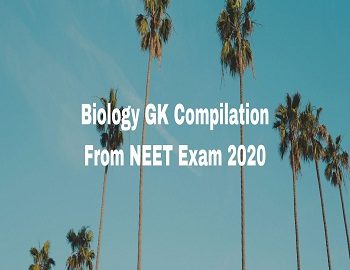
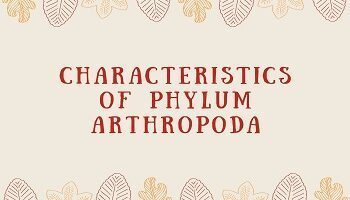
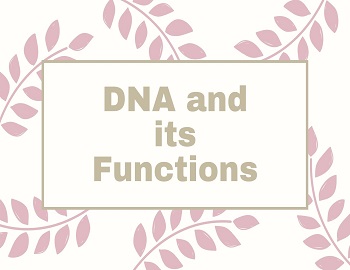


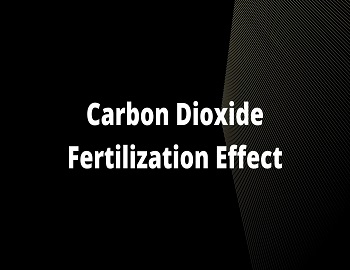
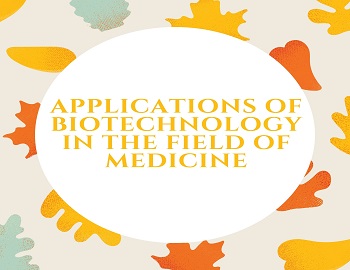
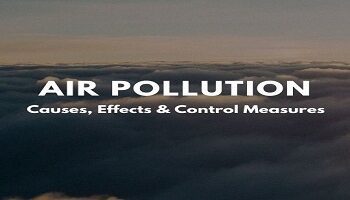

Comments (No)